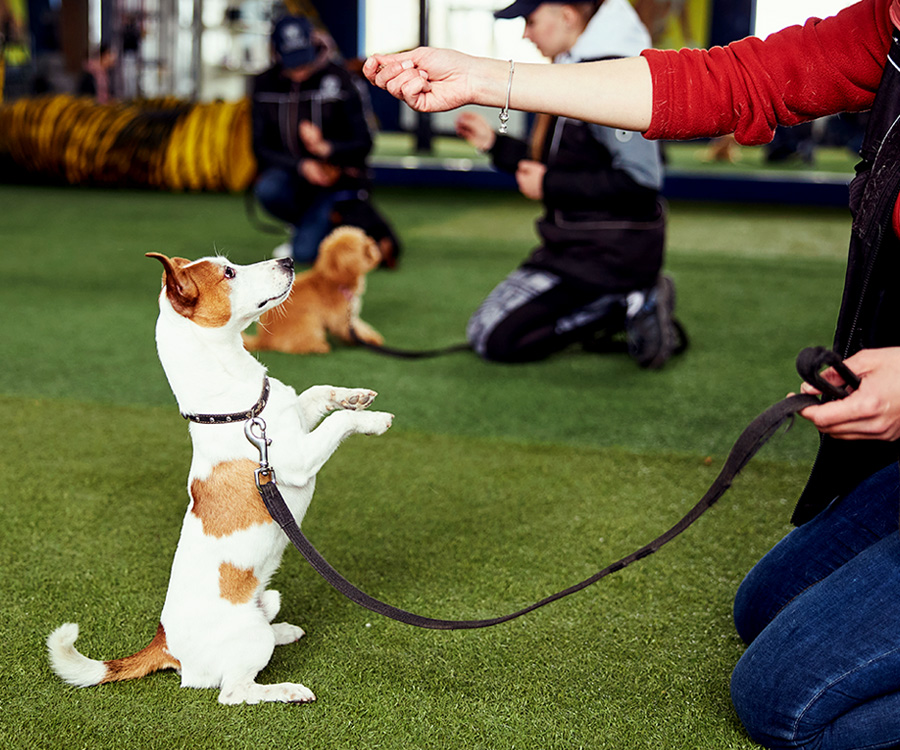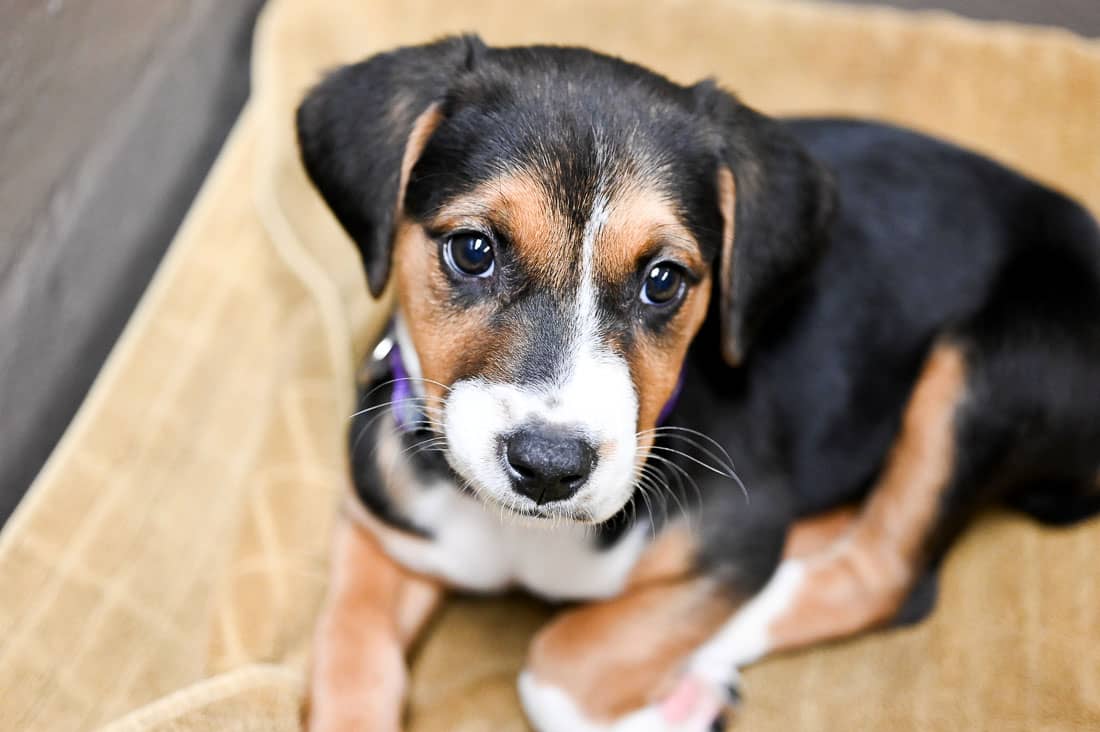Usual Behavioral Issues and Their Solutions in Dog Training
Usual Behavioral Issues and Their Solutions in Dog Training
Blog Article
Important Tips for Successful Dog Training: A Guide for Pet Owners
Effective canine training is a diverse process that calls for a calculated method tailored to both the animal's temperament and the proprietor's goals. Understanding exactly how to browse these obstacles can dramatically improve the training experience, ultimately transforming the connection in between owner and dog.
Recognizing Dog Actions
Recognizing dog behavior is important for efficient training and fostering a harmonious connection in between dogs and their proprietors. dog training. Pets communicate mainly via body language, vocalizations, and activities, making it critical for owners to interpret these signals accurately.

Socialization plays a significant role in canine behavior; direct exposure to numerous settings, individuals, and various other pets can considerably affect a pet dog's character. Aspects such as type qualities and private temperament should guide training methods, as some types may have certain behavioral traits that demand tailored techniques. By recognizing these aspects, owners can develop a helpful environment that urges favorable habits, leading to effective training results and a much deeper bond with their pet dogs.
Developing Consistent Commands
Efficient communication with your pet starts with establishing consistent commands. This fundamental element of training is crucial for cultivating understanding in between you and your pet. Uniformity in the commands you use makes sure that your pet dog can accurately connect specific words or phrases with the wanted behaviors.
When selecting commands, pick clear, unique words that are simple to state and differentiate from each other. Stay clear of making use of similar-sounding commands that may puzzle your dog. For example, making use of "sit" and "remain" is suitable, yet "rest" and "hit" could result in misconceptions.
In addition, preserve the very same tone and quantity for each and every command. Canines are sensitive to singing hints, so varying your tone can develop complication.
It is equally essential to make sure that all household members are on the very same web page pertaining to the commands made use of. A united front in command usage will prevent blended signals and enhance the discovering process.
Positive Support Methods
The power of favorable support in pet dog training hinges on its ability to urge preferred actions with benefits and appreciation. This strategy is grounded in the concept that habits followed by favorable end results are most likely to be duplicated. By integrating favorable support right into your training program, you can efficiently shape your pet dog's behavior in a constructive fashion.
To execute favorable reinforcement, it's necessary to recognize what inspires your dog, whether it be deals with, toys, or verbal praise. When your dog executes a desired activity, such as sitting on command, immediately compensate them with a treat or love. This association in between the command and the favorable end result enhances their understanding.
It's essential to timing the benefits correctly; providing the reinforcement within secs of the desired habits aids your canine make the link (dog training). Additionally, uniformity is essential-- make certain that all relative use the very same commands and incentive systems to avoid complication

Progressively, you can decrease the regularity of deals with as your dog learns the behavior, transitioning to applaud or recurring rewards. This method not only promotes a solid bond between you and your canine however additionally advertises a positive understanding environment, making training a satisfying experience for both.
Socialization and Communication
Regularly revealing your dog to a variety of environments, people, and other pets is crucial for their social advancement. Socialization ought to begin early, ideally during the vital home window of 3 to 14 weeks, when puppies are most receptive to new experiences. However, older canines can also take advantage of ongoing socialization initiatives.
Introduce your pet to various settings, such as parks, pet-friendly stores, and city areas. This exposure helps them adjust to various stimuli, decreasing stress and anxiety and concern actions. Motivate positive interactions with other dogs review and individuals, check these guys out making certain that these experiences are controlled and risk-free to foster self-confidence.
Utilize structured playdates with courteous pets, as this can boost your pet's social skills and educate them suitable habits. Obedience courses and training sessions also supply excellent chances for socialization, enabling your dog to connect with others in a supervised setting.
Monitor your pet's body movement during communications, as this will certainly help you evaluate their comfort level. Gradually increase direct exposure to more challenging scenarios while guaranteeing that each experience declares. A well-socialized dog is more probable to exhibit well balanced behavior, making them a joy to have in any kind of setup.
Dealing With Common Training Difficulties
Every dog proprietor will encounter training difficulties eventually, no matter of their pet's age or socializing level. Determining common concerns such as stubbornness, disturbances, and terror can help in creating effective approaches for improvement.

Gradually introduce interruptions as the canine becomes more skillful in commands. Short, frequent training sessions are additionally effective in maintaining attention.
Terror can prevent a pet dog's discovering process. Steady desensitization to the source of concern, coupled with favorable support, can assist ease anxiety. Patience is critical; never require a canine right into a scenario that causes distress, as this may exacerbate the concern.
Eventually, understanding and attending to these usual challenges with a structured method will More Info cultivate an extra productive training experience, reinforcing the bond in between pet dog and proprietor while advertising efficient understanding.
Final Thought
In summary, successful pet dog training counts on an extensive understanding of canine behavior, the establishment of regular commands, and the application of positive support strategies. Socialization plays a crucial role in developing well-adjusted animals, while attending to typical training obstacles calls for perseverance and adaptability. By executing these important approaches, pet dog proprietors can cultivate a strong bond with their pets and advertise desirable actions, inevitably causing an unified relationship between humans and their canine friends.
Recognizing dog actions is crucial for efficient training and fostering an unified connection between pooches and their proprietors.Socializing plays a significant duty in pet dog habits; direct exposure to numerous settings, people, and various other animals can substantially impact a dog's personality.The power of positive support in pet training lies in its capability to urge preferred behaviors through rewards and appreciation. By including favorable support right into your training program, you can effectively shape your dog's behavior in a positive manner.
In summary, successful pet training depends on a detailed understanding of canine behavior, the establishment of consistent commands, and the application of favorable reinforcement strategies.
Report this page